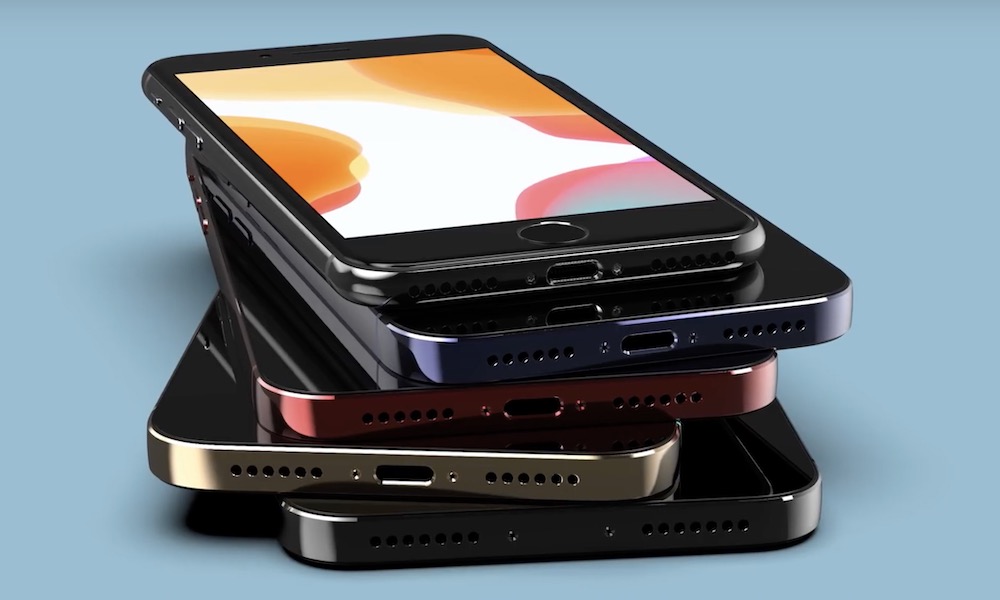New Flat-Edged Design May Only Come to iPhone 12 Pro Models
 Credit: EverythingApplePro
Credit: EverythingApplePro
Toggle Dark Mode
By now it’s pretty much been established that we’ll be getting four new iPhones this fall, with Apple expected to add a smaller version of its successor to the baseline iPhone 11.
While some of these models may be delayed until October or even beyond, with conflicting reports about the impact of the novel coronavirus pandemic on Apple’s plans, there doesn’t seem to be a lot of doubt about what we’ll be seeing, only when it will actually be arriving.
It’s all but certain that all four models will sport 5G wireless technology, with at least some of them supporting faster mmWave technology, along with Apple going all-in on OLED, phasing out its Liquid Retina LCD display in the lower-end models in favour of the better screen technology.
We’ve also heard that not only is Apple changing up the sizes a bit this year — the iPhone 12 Pro is expected to grow to the same 6.1-inch screen as the iPhone 12, while the iPhone 12 Pro Max will get a boost to a 6.7-inch screen, and the new fourth entry will come in with a 5.4-inch screen — but reliable analyst Ming-Chi Kuo reported last fall that we’d be seeing a throwback to the iPhone 4 design, with squarish sides more akin to what we last saw on the iPhone 5s and iPhone SE, albeit perhaps more reminiscent of more recent iPad Pro models.
The iPhone 12 Pro May Get More “Pro”
The fact that Apple plans to distinguish the iPhone 12 Pro in several ways over the standard iPhone 12 model shouldn’t be a big surprise. It’s very likely it won’t be getting the rumoured LiDAR Scanner, for instance, which recently came to the 2020 iPad Pro. Further, despite the fact that all of the iPhone 12 models are expected to feature OLED displays and 5G, the iPhone 12 Pro might still get an even better OLED display, and the ultra-fast mmWave 5G could be limited to the Pro models as well.
In fact, even as the iPhone 12 Pro adds a LiDAR Scanner as a sort of “fourth camera,” some recent reports have suggested that the iPhone 12 could remain with the dual-camera system.
Now it looks like Apple may have another really big distinction in store for the two tiers of iPhone 12. While a new report from Bloomberg confirms what we’ve been hearing about the new flat-edged chassis design, it suggests by omission that the new design may only come to the iPhone 12 Pro.
To be clear, Bloomberg doesn’t explicitly state that the iPhone 12 models won’t be getting the design, but it only mentions it coming to the two “Pro” models.
At least the two high-end devices will have flat stainless steel edges instead of the current curved design as well as more sharply rounded corners like the iPad Pro introduced in 2018.
Bloomberg
While the flat edges definitely seem to hearken back to the iPhone 5 era, the report suggests that the new iPhone 12 Pro might look more like a very small iPad Pro. It also notes that the screens will be flat rather than having the sloping edges that have been the trend since the iPhone X was released in 2017.
Bloomberg also corroborates other recent reports that the iPhone 12 will only have a dual-camera system, while the LiDAR scanner will come to the iPhone 12 Pro models. It’s unclear if there may be other camera improvements in the iPhone 12, although presumably Apple’s A14 chip will power new computational photography features, even if the physical camera sensors remain the same.
Our Take
It’s actually not much of a stretch to imagine that Apple might want to visually distinguish its iPhone 12 Pro models with a different design. We’re actually in new territory here, as this would be the first time that Apple has ever released two fully separate tiers of iPhones.
The iPhone XR broke entirely new ground, but it seems that it was originally intended to simply be an economy model for those who couldn’t justify purchasing one of the better iPhone XS models. It’s likely that even Apple was surprised at how much of a runaway success the iPhone XR was in terms of sales, and it’s been clear since the release of the iPhone 11 last year that Apple has chosen to embrace that success. This makes it likely that we’ll see those lower-cost models expanded into a lineup in their own right, much like Apple has been doing with its MacBooks for over a decade, and has more recently also done with its iPad lineup.
In that sense, Apple has a long history of using different designs for that purpose. The first standard MacBook models were white and black plastic affairs next to the aluminum MacBook Pro counterparts, and even today the MacBook Air remains distinct from the MacBook Pro. In the iPad lineup, the iPad Pro looks significantly different from the other iPad models, which in fact still remain equipped with a home button and Touch ID sensor, rather than a True Depth camera and Face ID.
Moving forward, it’s not hard to see Apple offering three clear tiers of iPhone as well, with the upcoming second-generation iPhone SE filling the same niche as the 10.2-inch iPad, the iPhone 12 being the iPad Air of the lineup, and the iPhone 12 Pro of course falling into line with the iPad Pro.
[The information provided in this article has NOT been confirmed by Apple and may be speculation. Provided details may not be factual. Take all rumors, tech or otherwise, with a grain of salt.]






